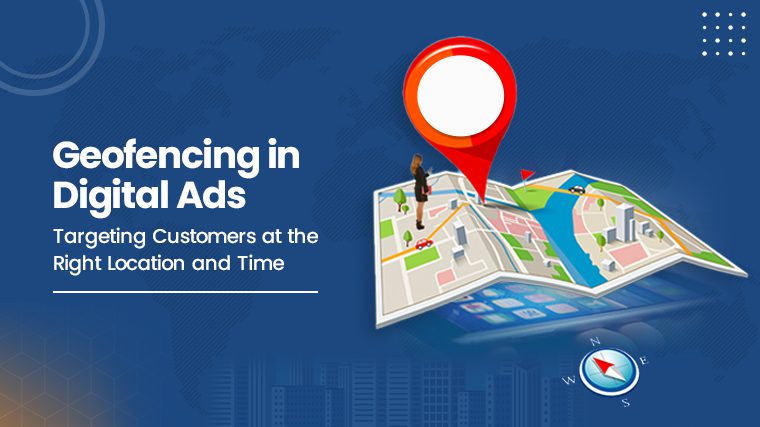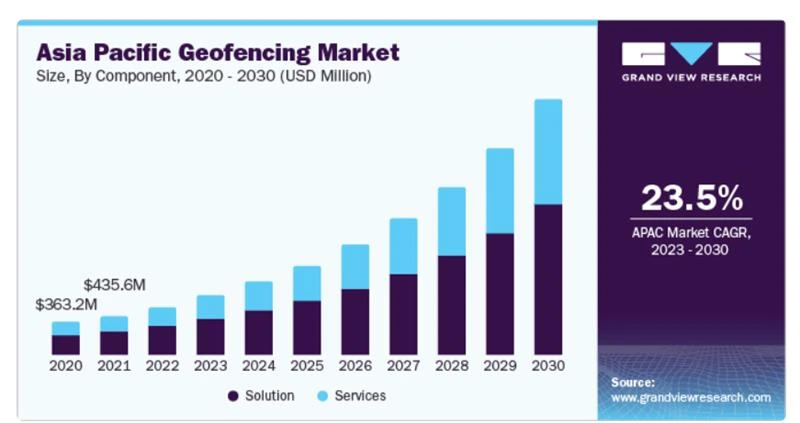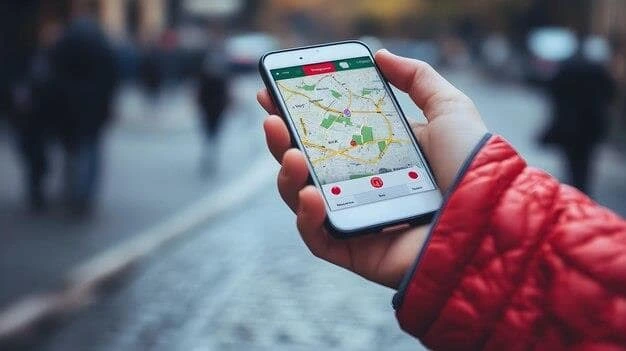
In the new, rapid-paced digital panorama, attaining potential customers with precision has emerged as paramount for agencies aiming to maximize their marketing ROI. One innovative approach that has received large traction is geofencing. This location-based advertising approach allows organizations to interact with purchasers through turning in timely and relevant commercials based totally on their real-time geographic vicinity.
Understanding Geofencing in Digital Advertising
Geofencing entails putting a digital perimeter, or “fence,” around a selected geographic location. When a cell device enters or exits this predefined boundary, it triggers the transport of focused advertisements or notifications to the device. This era relies upon GPS, RFID, Wi-Fi, or cellular data to ascertain a buyer’s location with first-rate accuracy. According to Business Standard, about 83% of smartphone users in India rely on their devices to get local information or business.

Furthermore, after receiving a location-based advertisement, 53% of shoppers visit a retailer. For example, a retail shop can make a geofence around its premises. If some potential customers enter this area, they may get a push notification to visit the shop for the reason that they would be interested in ongoing promotions or reductions. This approach ensures that advertising and marketing messages are not only applicable but also nicely timed, enhancing the possibility of conversion.
The Mechanics of Geofencing Marketing
Implementing geofencing in PPC advertising in India includes numerous key steps:
- Defining the Geofence Boundary: Businesses determine the precise geographic region to goal. This may vary from a radius around a bodily store to a bigger location encompassing multiple locations.
- Integrating with Mobile Applications: To interact with users successfully, agencies often combine geofencing capabilities into their cellular apps. When users download the app and supply location permissions, the geofence can hit upon their proximity and trigger relevant ads or notifications.
- Crafting Targeted Content: The achievement of geofencing hinges on handing over content material that resonates with the target market. Personalized offers, event reminders, or remarkable offers can be sent to clients inside the geofenced area, increasing engagement and driving foot visitors.
- Analyzing User Behavior: Post-marketing campaign evaluation permits corporations to evaluate the effectiveness of their geofencing efforts. Metrics, together with engagement costs, saved visits, and conversion charges, offer insights into user behavior and overall campaign performance.
Benefits of Geofencing in Digital Advertising
- Enhanced Targeting Precision: Geofencing permits organizations to target clients based on their actual region, making sure that advertising messages reach individuals who are in proximity to the industrial organization. This precision reduces wasted advert spend and will increase the relevance of the advertisements.
- Improved Customer Engagement: By delivering timely and contextually applicable messages, geofencing fosters higher engagement costs. Consumers are much more likely to reply to offers that are pertinent to their modern region and instant needs.
- Increased Foot Traffic and Sales: For brick-and-mortar establishments, geofencing serves as a powerful tool to power foot visitors. By alerting nearby consumers to in-keep promotions or events, groups can inspire visits and enhance sales.
- Cost-Effective Marketing: Geofencing permits the sustainable allocation of advertising resources with the aid of focusing efforts on a specific location. This focused method frequently results in a higher return on investment as compared to broader advertising strategies.
- Valuable Consumer Insights: Analyzing statistics from geofencing campaigns provides companies with a deeper understanding of customer conduct, choices, and motion patterns. These insights can inform destiny marketing techniques and operational selections.
Geofencing and PPC Advertising in India
In the area of PPC (pay-per-click) advertising in India, integrating geofencing can considerably decorate campaign effectiveness. By combining the immediacy of PPC commercials with the location-unique targeting of geofencing, organizations can attain capacity clients at essential decision-making moments.
For example, a chain of eating locations running in more than one Indian town can install geofences round its stores. When users inside those geofenced areas search for eating alternatives online, the restaurant’s PPC ads can appear prominently, offering special offers or reductions. This approach, no longer the simplest, will increase the visibility of the ads; however, it will additionally drive higher conversion costs by appealing to purchasers within the vicinity.
Best Practices for Implementing Geofencing in PPC Campaigns
- Set Clear Objectives: Determine the goal you want to achieve with geofencing — more safe visits, an event promotion, or more sales of a certain product. Clear goals will manual the setup and content of your geofencing campaign.
- Choose the Right Geofence Size: The length of your geofence must align with your objectives and the character of your enterprise. A smaller radius may be suitable for city areas with high foot traffic, while a larger radius might be important in suburban or rural settings.
- Deliver Relevant and Timely Content: Ensure that the messages or advertisements caused by the geofence are pertinent to the audience’s area and are brought at the proper time. Irrelevant or untimely notifications can lead to user frustration and disengagement.
- Ensure Compliance with Privacy Regulations: Always expressly obtain consent from users before amassing location information and offer clear data on how this data may be used. Adhering to private legal guidelines builds belief and avoids felony complications.
- Monitor and Optimize Campaign Performance: Regularly examine the performance metrics of your geofencing campaigns. Use the insights gained to refine your concentration, messaging, and normal strategy for progressed consequences.
The Future of Geofencing in Digital Advertising
As technology is evolving, geofencing is poised to become even more sophisticated. Advancements in artificial intelligence and machine learning can beautify the accuracy of location-based, totally targeted marketing and enable greater personalized marketing experiences.
Moreover, the growing adoption of wearable devices and the Internet of Things (IoT) presents new possibilities for geofencing. Businesses can discover progressive ways to interact with purchasers via diverse connected devices, similarly, blurring the lines between the digital and physical worlds.
Conclusion
Geofencing is a kind of digital marketing that allows businesses to interact with consumers in a highly targeted and timely way. Integrating geofencing into your advertising technique will enable you to decorate patron engagement, strengthen foot traffic, and increase your return on funding.
At e intelligence, we specialize in crafting data-driven digital marketing solutions tailor-made to your business wishes. With over 17 years of experience in search engine marketing, paid search, and internet improvement, our expert crew is prepared to help you leverage revolutionary strategies like geofencing to raise your brand and maximize your advertising and marketing impact.
Whether you’re exploring PPC services in India, looking for the best PPC company in India, or honestly aiming to take your digital campaigns to the following degree, geofencing can be a game-changer. It provides a powerful layer of real-time, area-based engagement that brings your advertisements immediately to consumers when and where they’re most likely to behave.




